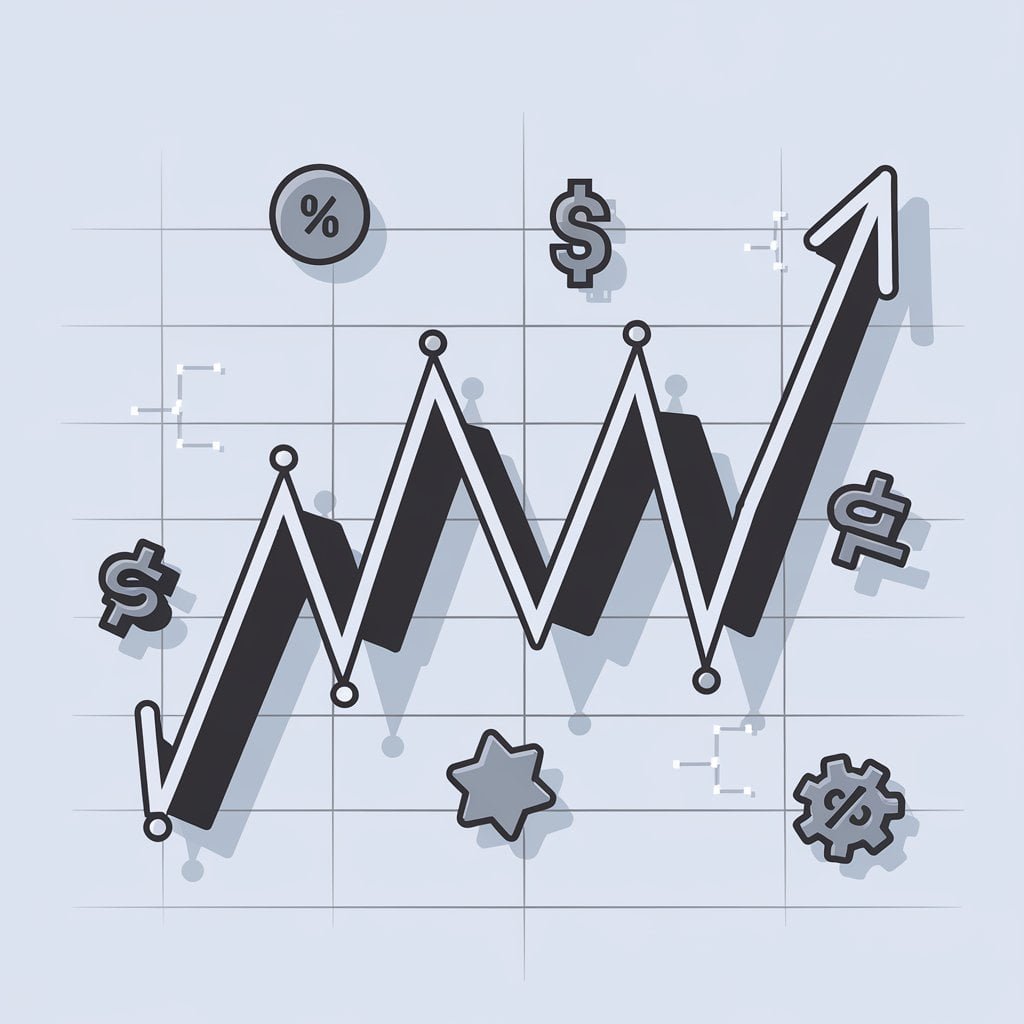
How to Profit from High Volatility Stocks: A Day Trader’s Toolkit
Click Here To Save Time
– High volatility stocks can lead to significant profits or losses due to their rapid price changes.
– Factors like earnings reports, news events, and low float can make stocks highly volatile.
– Essential strategies include using stop-loss orders, setting realistic profit targets, and focusing on liquidity.
– Emotional discipline is crucial when trading volatile stocks to avoid costly mistakes.
– High-profile examples like Tesla and the GameStop phenomenon illustrate the risks and rewards of trading volatile stocks.
– Successful trading of high volatility stocks requires vigilance, adaptability, and consistent risk management.
Introduction
Day trading in the stock market can be both thrilling and challenging, especially when it comes to trading high volatility stocks.
These stocks can see their prices rise or fall dramatically within minutes, offering the potential for quick gains but also posing a risk of significant losses.
Understanding how to navigate these fast-moving stocks is essential for any day trader aiming to make a profit.
High volatility stocks attract day traders because of their ability to make large price movements in a short time. This volatility can be triggered by several factors such as earnings reports, market news, or overall sentiment towards a specific sector or company.
However, trading these stocks successfully requires a well-thought-out strategy and a calm approach. It’s not something for the faint of heart or those unprepared for sudden market shifts.
This guide will walk you through the critical strategies needed to trade high volatility stocks, from understanding the risks involved to setting up effective trading plans.
Whether you’re a seasoned trader or a beginner eager to get started, this article will equip you with the knowledge and tools needed to trade these stocks successfully.
Understanding High Volatility Stocks

Before jumping into strategies, it’s essential to grasp what makes a stock highly volatile.
Volatility refers to the speed at which a stock’s price moves up or down.
A stock is considered highly volatile if its price fluctuates significantly within a short period.
Several factors can make a stock highly volatile:
–Earnings Announcements: When a company releases its quarterly earnings, its stock price can swing wildly if the results differ from expectations.
–Market News: Unexpected events, such as legal issues, product launches, or global events, can cause sudden changes in stock prices.
–Low Float: Stocks with a limited number of shares available for trading (low float) tend to be more volatile because even small trades can have a big impact on the price.
–Speculative Interest: Stocks that catch the attention of online communities or become the focus of speculative trading can experience extreme volatility, as seen with companies like GameStop or AMC.
Take Tesla (TSLA), for example. Over the years, Tesla has been one of the most volatile stocks due to its innovative yet controversial approach to the auto industry, Elon Musk’s unpredictable tweets, and its high media profile.
Traders have seen Tesla’s stock price swing by 10% or more in a single day, making it a popular target for those looking to capitalize on short-term price movements.
The Risks and Rewards of Trading High Volatility Stocks

Trading high volatility stocks offers the potential for quick profits, but it also comes with significant risks. Understanding both is crucial for any trader.
Rewards:
–High Profit Potential: Volatile stocks can offer large profits quickly. A stock that moves 5% to 10% in a day presents an excellent opportunity for gains, especially if you time your trades well.
–Frequent Trading Opportunities: These stocks often provide multiple trading chances throughout the day, allowing traders to profit from both rising and falling prices.
–Learning Experience: Trading in such a dynamic environment forces traders to learn rapidly. The experience gained is invaluable in sharpening skills in technical analysis, market psychology, and making quick decisions.
Risks:
–Significant Losses: Just as quickly as you can gain, you can also lose. Prices can move against you rapidly, leading to substantial losses if you’re not careful.
–Emotional Stress: The rapid price movements can lead to emotional decision-making, causing traders to hold onto losing trades or exit winning ones too soon.
–Slippage: In highly volatile markets, the price at which you want to buy or sell may differ from what you get. This difference, known as slippage, can reduce your profits or increase your losses.
–Overtrading: The constant price movements can tempt traders to trade too frequently, leading to overtrading, which can rack up fees and increase the risk of losses.
Strategies for Trading High Volatility Stocks
Successfully trading high volatility stocks requires a mix of strategies, discipline, and market understanding. Here are some strategies to consider:
1. Use of Stop-Loss Orders:
Stop-loss orders are crucial when trading volatile stocks. They automatically sell your stock when it reaches a certain price, limiting your losses if the market moves against you.
For instance, if you buy a stock at $50 and set a stop-loss order at $45, your maximum loss on that trade would be $5 per share. This strategy is essential in volatile markets where prices can turn against you quickly.
Case Study
Sarah, a trader who specializes in biotech stocks, always uses stop-loss orders to protect her investments.
During one trade, she bought a biotech stock at $120, anticipating a positive FDA announcement. However, when the FDA delayed its decision, the stock price dropped rapidly.
Thanks to her stop-loss order set at $115, Sarah minimized her loss, allowing her to move on to the next opportunity without major damage to her portfolio.
2. Set Realistic Targets:
In volatile markets, prices can swing dramatically. Setting realistic profit targets helps you lock in gains without getting greedy.
For example, if a stock you purchased at $100 jumps to $110 within an hour, consider securing some profits rather than waiting for an even higher price that may not come.
3. Focus on Liquidity:
When trading volatile stocks, it’s essential to choose stocks with high liquidity. Liquidity refers to how easily a stock can be bought or sold without affecting its price.
High liquidity ensures you can enter and exit trades quickly, which is crucial in a fast-moving market. Stocks with low liquidity can be challenging to trade and may lead to slippage or larger-than-expected losses.
4. Follow the News:
High volatility stocks are often driven by news. Keeping a close eye on the news and being aware of upcoming events like earnings reports, economic data releases, or industry conferences can give you an edge.
News can create trading opportunities but also requires quick decision-making.
5. Keep Your Emotions in Check:
The fast-paced nature of trading volatile stocks can stir up emotions. It’s easy to get caught up in the excitement of a winning trade or the fear of a losing one. To succeed, you must remain disciplined and stick to your trading plan.
Letting emotions dictate your trades can lead to costly mistakes.
Imagine you’re a surfer, and the stock market is the ocean. The waves—representing the volatile stocks—are powerful and unpredictable.
To ride these waves successfully, you need to be prepared, understand the conditions, and maintain your balance. The thrill of riding a massive wave can be exhilarating, but wiping out can be just as dramatic.
Trading volatile stocks is similar; with the right skills and mindset, you can ride the market’s waves, but losing focus for even a moment can result in a costly tumble.
Case Study: The GameStop Phenomenon

One of the most famous examples of high volatility trading in recent years is the GameStop (GME) short squeeze in early 2021. This event showcased both the potential and the risks of trading highly volatile stocks.
Background:
GameStop, a struggling video game retailer, became the center of a massive short squeeze in January 2021. The stock had been heavily shorted by institutional investors who were betting that its price would continue to fall.
However, a group of retail traders on the Reddit forum r/WallStreetBets decided to buy up GameStop shares, driving the price up rapidly.
The Volatility:
Within days, GameStop’s stock price soared from around $20 to a peak of over $480, an increase of more than 2,000%. This surge was driven by retail traders piling into the stock, forcing short sellers to cover their positions by buying shares, which further drove up the price.
Outcome:
The volatility during this period was extreme. Some traders made fortunes, while others lost significant amounts of money as the price swung wildly. The stock’s value fluctuated dramatically, with swings of 100% or more in a single day.
Eventually, the price fell back to more reasonable levels, but not before making headlines around the world.
Lessons Learned:
–Market Psychology:
The GameStop saga highlighted the importance of understanding market psychology. The fear of missing out (FOMO) and the herd mentality played a significant role in driving the stock’s price up.
–Risk Management:
It also underscored the need for solid risk management strategies. Traders who entered at the peak and did not have stop-loss orders in place likely suffered significant losses when the price dropped.
-News and Social Media Influence:
The event demonstrated the power of social media in influencing stock prices, showing that even retail traders could move markets when acting together.
Conclusion
Trading high volatility stocks can be incredibly rewarding but also comes with a high level of risk. To succeed, traders must be well-prepared, disciplined, and emotionally resilient.
By using strategies such as stop-loss orders, setting realistic profit targets, focusing on liquidity, staying informed, and keeping emotions in check, traders can navigate the volatile waters of the stock market more effectively.
Ultimately, the key to trading high volatility stocks is to remain vigilant and adaptable. The market can change rapidly, and being prepared for those changes is essential to surviving—and thriving—in this environment.
By applying the strategies outlined in this article, you can better position yourself to take advantage of the opportunities that high volatility stocks offer while also protecting yourself from the inherent risks.
However, it’s crucial to remember that not every trade will be a winner. Losses are a natural part of trading, especially when dealing with volatile stocks. The goal is to manage those losses effectively, learn from them, and continue refining your trading approach. Over time, with experience and discipline, you can develop a trading style that suits your risk tolerance and financial goals, ultimately leading to greater success in the high-stakes world of day trading.
Click Here For Our Sources
https://www.investopedia.com/articles/trading/09/volatility.asp
https://www.thebalance.com/how-to-day-trade-volatility-1031075
https://www.tradingsim.com/blog/day-trading-volatility-stocks/
https://www.fidelity.com/viewpoints/active-investor/day-trading-volatility
https://www.investors.com/news/trading-high-volatility-stocks/
Leave a Reply
You must be logged in to post a comment.